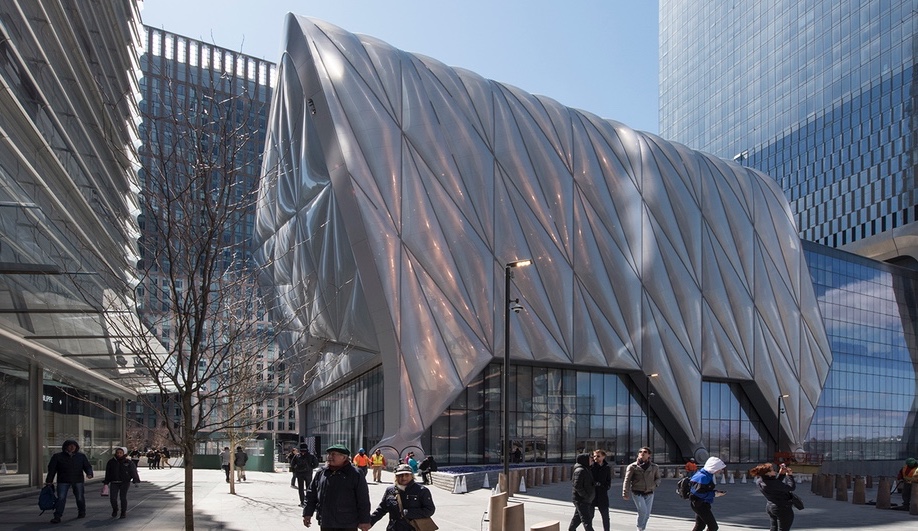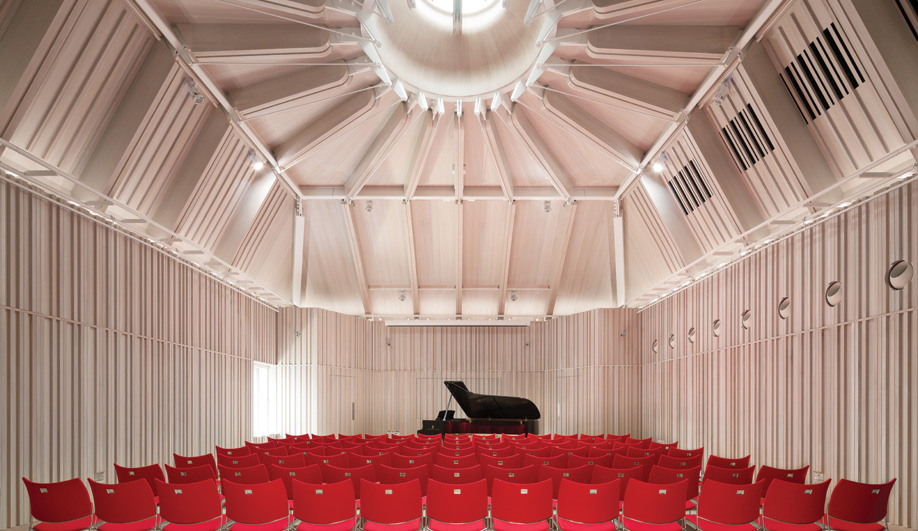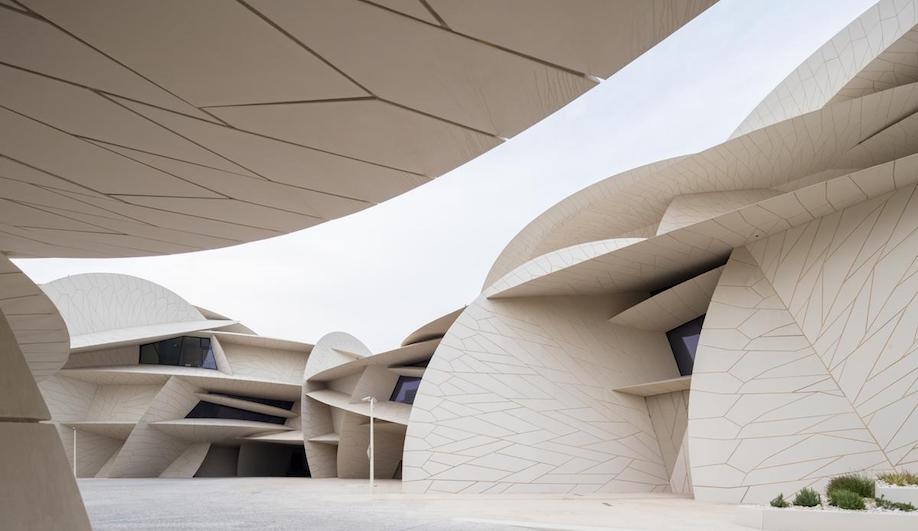
Bjarke Ingels and his Copenhagen firm submerge a magnificent building in a dry dock in Helsingør, Denmark.
BIG usually goes big, with spectacular concepts that radically alter a city’s urban fabric. But with the new Danish National Maritime Museum, the architecture firm led by Bjarke Ingels has made a statement that up is not necessarily the only way to build an icon.
Still, the 6,000-square-metre underground structure in Helsingør shares a crucial quality with the firm’s other projects, including its early renowned Copenhagen buildings, such as 8House and Mountain Dwellings. That is, people can scale them through a continuous loop – except here visitors are led across and down, via zigzagging bridges, to the bottom of a 60-year-old dry dock.

Two of the three bridges connect to the museum’s underground wings on either side of the dry dock.
Though BIG won the design competition in 2007, the project was born 13 years ago, when nearby Kronborg Castle, famed as the setting for Hamlet, became a UNESCO World Heritage Site. The historical designation required that the maritime museum it housed be moved to new premises, where it could also bolster the area’s cultural programming, and that nothing obstructing the view to Kronborg be built within a 500-metre radius. “To design an iconic building that had to be invisible was a paradox,” says David Zahle, partner in charge at BIG. “But it also held the key to the solution.”

The bridges, which house programming, provide access across the site and inside. The auditorium bridge also connects to the Kronborg Castle, the museum’s former home.
Part of the solution, the three two-storey bridges, are actually glazed containers for exhibitions, a café and educational spaces. The rest of the glass-edged museum lies below ground, in a rectangular structure that envelops the dry dock’s 1.5–metre-thick concrete walls. Visiting the museum, you move in and out of the lighter container spaces and into the subterranean areas, the dry dock disappearing and reappearing through the fully glazed walls.

The exhibit halls, by Kossmann.dejong, celebrate Danish nautical history.
While the exhibition halls, by Dutch firm Kossmann.dejong, recreate the experience of being on a ship at sea, the museum itself unravels like a journey. “By defining the points needed to be connected and drawing a continuous line that holds them together, we achieved a building that is both coherent and has a variety of exhibition spaces,” says Zahle.
In retaining the imprint of the original dock, BIG celebrates Danish shipbuilding, yet in a way that one might read as an architectural comment on a once-vigorous industry. Take the bridges’ provenance: they were assembled on a dockyard in China, the world’s leader in shipbuilding, and shipped to Helsingør.
The museum, then, salutes a European nautical industry that is struggling, while it is itself a physical product of a globalization made possible, at least in part, by the evolution of container ships. The latter are impossible to exhibit, due to their sheer size, says Zahle. “So that scale is exhibited through the possibility to walk around the dock and see the bridges.”




